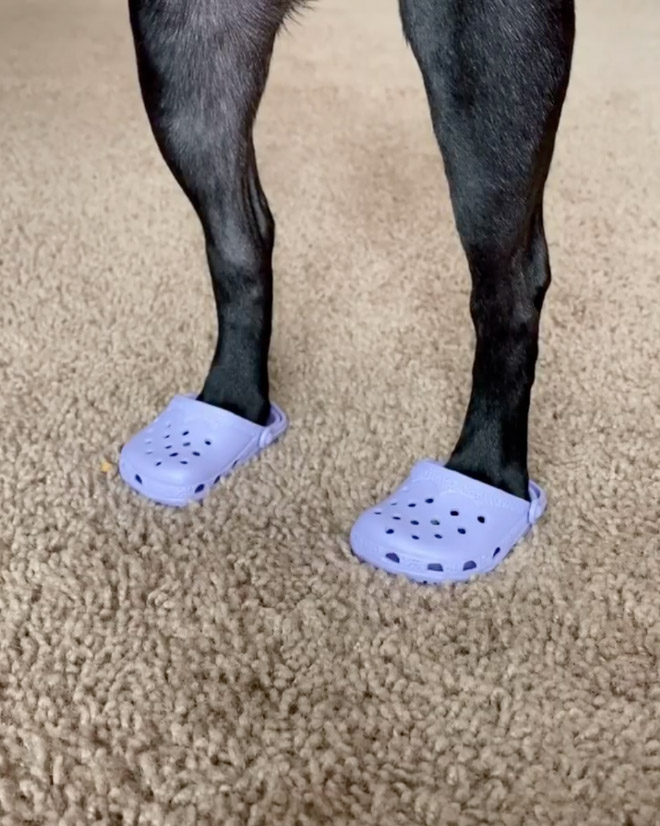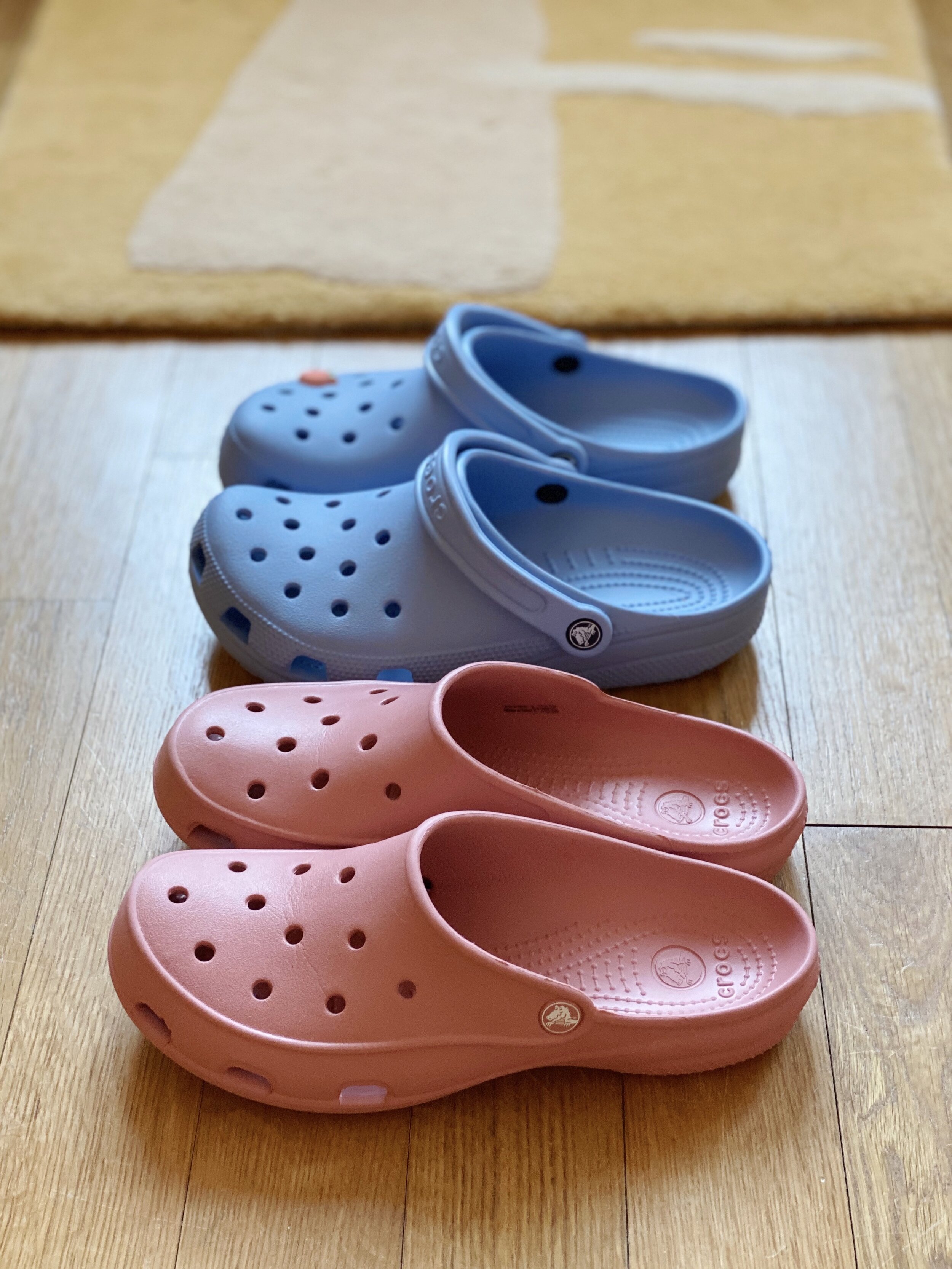Could your trusty Crocs, the iconic footwear beloved for its comfort and practicality, potentially double as a survival meal? The definitive answer, unfortunately, is a resounding no: Crocs are decidedly not designed for consumption, and attempting to eat them poses a range of health risks.
The tantalizing prospect of eating footwear, a concept that has spurred amusement and sparked online challenges, should be approached with considerable caution. The material used in Crocs, a proprietary closed-cell resin known as Croslite, is not a foodstuff. It is a synthetic material crafted for durability and comfort, not nutritional value. The notion of consuming Crocs has circulated the internet for a while, it’s important to separate fact from fiction. Numerous sources, ranging from reputable publications to the Crocs company itself, advise against ingesting these shoes, citing potential dangers that far outweigh any imagined benefit.
To understand the risks, it's essential to delve into the composition of Crocs and the implications of ingesting its core components. The material is primarily a closed-cell resin, composed of ethylene-vinyl acetate (EVA) foam. While EVA is often used in various products due to its flexibility and durability, it is not considered safe for human consumption. Attempting to eat Crocs could lead to a range of health issues, including digestive problems, dental damage, and potential exposure to harmful chemicals. The Croslite material contains no nutritional value and lacks the essential elements the body needs for survival.
Here's a comprehensive look at the key aspects and warnings associated with eating Crocs shoes:
| Aspect | Details |
|---|---|
| Primary Material | Croslite: a closed-cell resin, a form of EVA (ethylene-vinyl acetate) foam. |
| Edibility | NOT edible. Crocs are NOT food. |
| Nutritional Value | None. Lacks essential nutrients. |
| Safety Concerns | Risk of digestive distress, potential dental damage, and exposure to harmful chemicals. |
| Company Recommendation | Crocs Inc. strongly advises against eating their shoes. |
| Taste/Texture (Hypothetical) | Likely unpalatable; texture would not be akin to food. |
| Origin of Myth | Urban legend; fueled by humor and internet challenges. |
| Alternatives | If stranded, prioritize finding actual food or edible plants; these items should not be your source of sustenance. |
| Scientific Validation | There is no scientific backing for the safe consumption of Crocs. |
| Ingredients | Primarily EVA, with additives for color and texture, but not for edibility. |
| Health Risks | Nausea, vomiting, abdominal pain, and potentially more severe reactions depending on the amount ingested. |
It's a question that has circulated the internet, prompting curiosity and, in some cases, even attempts to sample this unconventional cuisine. The answer, backed by scientific understanding and the manufacturer's clear warnings, is a firm negative. Crocs are not designed for consumption. The material used in their construction, known as Croslite, is a synthetic resin formulated for durability, flexibility, and comfort, not nutritional value or digestive compatibility. Eating Crocs can be hazardous, and should be avoided under all circumstances.
The ingredients within the Croslite material, while not inherently toxic in their intended use as footwear, are not processed or intended for ingestion. Consuming this material would lack any nutritional benefit and poses a risk to the digestive system. The potential for dental damage, due to the hardness and composition of the material, further underscores the dangers of this ill-advised experiment. The company itself has issued emphatic warnings against consuming their products, reinforcing the message that Crocs are shoes, not sustenance.
The evolution of this urban legend reveals the human tendency to blend absurdity with survival curiosity. The initial question, Can you eat Crocs? may have been born of simple humor. However, the idea has spurred various online challenges, some of which have involved people attempting to cook, boil, or roast Crocs shoes, with the intention of rendering them edible. None of these experiments can be considered to be safe or scientifically sound. Instead, these actions further demonstrate the need for caution. The results would undoubtedly be unpleasant, potentially resulting in digestive distress, and providing no positive effects or benefits. The outcome highlights the critical message: Crocs are for wearing, not eating.
There are other factors that should be considered when evaluating the prospect of eating Crocs. The manufacturing process of these shoes often incorporates various additives, including pigments, stabilizers, and other chemical compounds. These compounds are used to enhance the appearance, durability, and overall functionality of the footwear. Even in small doses, these additions may lead to unintended adverse health effects. Crocs, designed for the rigors of everyday use, are not subjected to the strict food safety standards that govern products intended for human consumption. The materials and processes used in their manufacture are focused on creating a durable and comfortable shoe, not an edible product.
One of the main reasons why Crocs are not safe to eat lies in their primary constituent: Croslite. The substance is a proprietary closed-cell resin that is not digestible, not nutritionally advantageous, and may even be hazardous if ingested. It is the central component that provides the shoes’ unique characteristics. The foam-like texture, the buoyant properties, and the overall comfort can be attributed to Croslite, but it is important to understand that these features are not consistent with any dietary requirements. In other words, the material that makes the shoes special also prevents them from being safe for consumption.
The discussion also underscores the broader importance of critical thinking and responsible consumption. In an era marked by the rapid dissemination of information, both accurate and misleading, it is crucial to evaluate claims with a discerning eye. The notion of eating Crocs is, at its heart, an example of misinformation. It's important to separate fact from speculation, especially when health and safety are at stake. The simple truth is that Crocs are shoes, and shoes are not food.
In situations where individuals might be tempted to try to eat Crocs, such as a survival scenario, it is always better to prioritize seeking out actual food sources, water, and to find ways to stay safe. While it's easy to imagine that something could be useful in an emergency, it is best to stick to tested and safe sources of nutrition. Turning to footwear for sustenance could be detrimental to health. This is why it’s important to emphasize that Crocs should be treated as nothing more than a shoe and used for the purpose they were designed for, and not as a dietary resource.
The discussion surrounding eating Crocs also touches on the nature of urban legends and their persistence. These stories often originate from playful curiosity or a desire to test the boundaries of what is possible. However, they can also spread misinformation, and in some cases, they can promote behavior that puts people at risk. The Crocs-as-food myth has continued to circulate because it combines a level of curiosity with the inherently humorous idea of trying to eat a pair of shoes. The humorous quality, however, does not detract from the core safety concern.
In conclusion, the query Can you eat Crocs? garners a resounding no. Crocs, while perhaps appealing in terms of comfort and style, are not designed, intended, or safe for human consumption. The material used in their manufacture, Croslite, is not a foodstuff. It lacks nutritional value and presents potential health risks. Whether fueled by curiosity, humor, or a sense of adventure, any attempt to eat Crocs should be met with caution. The best practice is to leave your Crocs on your feet, and to find appropriate nourishment when it is needed.


:format(webp)/https://static-hk.zacdn.com/p/crocs-7292-1413726-1.jpg)
